Neuropsychologist Lidia García Pérez explains the new proposals in sensory stimulation for disorders of consciousness.
Sensory stimulation programs have a long history of use in neurorehabilitation, being one of the most commonly used therapeutic options in the approach to global disorders of consciousness following severe brain injury[1].
The idea they are based on is that enriched environments promote neuronal plasticity and, therefore, the recovery of these patients[2, 1]. However, various recent systematic reviews[3, 4, 5, 6], including one published by The Cochrane Collaboration[3], conclude that reliable evidence is still lacking to support or refute the effectiveness of sensory stimulation in patients with global disorders of consciousness (coma, vegetative state or unresponsive wakefulness, minimally conscious state).
On the other hand, in recent years there have been advances in the understanding of the brain in general and of disorders of consciousness in particular, and new paradigms and theoretical notions have emerged that make it necessary to evaluate whether the main characteristics of the sensory stimulation method remain appropriate in light of what we now know.
Recently, Frontiers in Human Neuroscience published a paper[2] in which the authors review the main characteristics of sensory stimulation, evaluating which are outdated and which are not, and proposing some changes that are in line with current knowledge and theoretical perspectives.
In today's post I briefly discuss sensory stimulation and the current conception of consciousness and disorders of consciousness, before summarizing that paper.
Current conception of consciousness and global disorders of consciousness.
Traditionally, the normal state of consciousness and disorders of consciousness (coma, vegetative state or unresponsive wakefulness and minimally conscious state) have been defined according to two components:
- The arousal (the level of alertness or activation, “being conscious”) which is defined as the ability to awaken and maintain sleep-wake cycles.
- The awareness (content of consciousness or “being aware”) which is defined as the ability to integrate different sensory stimuli into a knowledge that allows us to be aware of ourselves and of what is happening around us[7].
Thus, the coma state is characterized as a normally transient condition, in which the patient does not show arousal nor awareness and remains with the eyes closed without responding to stimulation or communicating.
In the vegetative state or unresponsive wakefulness the patient shows open eyes, reflecting the preservation of the ascending reticular activating system and therefore arousal. But, being unable to generate purposeful behavior, they are considered to lack consciousness or awareness
And, finally, in the minimally conscious state patients are capable of generating behavior that, although variable, is reproducible, so they are considered to possess awareness in addition to arousal [8].
However, in recent years the mechanisms of consciousness have been associated with new conceptions such as information integration[9], cortical areas that interact and brain connectivity [10, 11]. And, currently, consciousness is seen as the capacity of a system to integrate information that appears to depend on the brain's ability to sustain complex patterns of activity distributed among interacting cortical areas [2].
In line with this perspective, disorders of consciousness have recently been redefined as a disconnection syndrome, in which a functional and/or structural interruption at the level of a cortico-striato-pallido-thalamo-cortical mesocircuit affects the reappearance of the capacity for conscious responsiveness [12], an opinion supported by numerous lines of recent evidence [1].
Under this connectionist paradigm new theoretical notions come into play and, therefore, it is pertinent to also consider new factors when proposing suitable treatments for patients with disorders of consciousness, both at a global level regarding a possible integration of the various treatment approaches that exist (neuromodulation, pharmacological treatment, sensory stimulation, etc.), and at a particular level regarding each of them, in the present case concerning sensory stimulation programs.
What is sensory stimulation?: basis and main characteristics.
Sensory stimulation for patients with disorders of consciousness is a methodology aimed at promoting the arousal and the behavioral response of these patients through the application of environmental stimuli [13], so that by gradually providing sensory information to their nervous system we provoke the patient to perform some action, at the level that they can respond [7].
To this end, different smells and tastes of moderate-high intensity are used, verbal and non-verbal sounds (among the latter, white noise or music), visual stimuli (objects, photographs) and tactile stimuli (physical contact, feeling one's own body, objects with different textures, moving an object, etc.)[7].
Although different versions and procedures have been adopted within this method, they invariably agree on the following characteristics [2]:
- The stimuli presented are simple,
- with moderate to high intensity,
- they may have autobiographical and/or emotional content,
- they are presented repeatedly and frequently,
- they are administered through multiple sensory channels.
Sensory stimulation is a minimally invasive methodology, harmless, inexpensive and easy to apply, reasons why it remains an attractive rehabilitation method [14]. However, as mentioned above, its theoretical basis has not been clearly defined in the past and, in general, there are contradictory results regarding its effectiveness that make additional research into its procedures necessary with a more controlled methodology [3, 4, 5, 6], as well as updating its characteristics based on current knowledge[2].
New proposals in sensory stimulation for disorders of consciousness
Abbate et al.[2] have evaluated the main characteristics of the standard stimulation method and make an updated proposal that includes some modifications. Their proposals are:
Complex stimulation, including structured and meaningful stimuli
As the authors point out, standard sensory stimulation protocols usually use simple stimulations and often without meaning (decontextualized), following the tacit hypothesis that patients with disorders of consciousness have reduced attentional capacities and that, therefore, simple stimuli are more suitable as they are easier to process cognitively.
However, recent studies indicate that these patients can participate in structured tasks and may have preserved complex responses, which suggest that they maintain preserved “islands of higher-order cognitive functioning”.
Based on these findings, the authors propose that the aim of future protocols be the stimulation of those isolated yet preserved higher-order cognitive functions, for which complex stimuli could prove more efficient than simple ones.
Avoid high frequency and repetition of stimuli
Generally, standard programs consist of presenting a simple, repetitive, frequent stimulation of moderate to high intensity.
The authors highlight that this practice is contrary to the objectives of stimulating cognitive processes, since a response of habituation may be produced, which as they recall consists of a decrease in the neuronal and behavioral response that results from repeated stimulation.
Therefore, they propose avoiding both repetition and high frequency of stimulus presentation, since also more frequent stimulation results in a faster and/or more pronounced decrease in response.
Administer stimuli of appropriate intensity, occasionally interspersed with high-intensity stimuli
Regarding intensity, the advantage of intense stimulation (abrupt onset and high-energy stimuli) is that it easily triggers attention; however, given the mixed results that research has produced on this matter, the authors question whether intense stimulation can also induce habituation or not, so they propose interspersing adequately intense stimulation (which I understand to mean natural intensity) with intense stimuli occasionally.
Integrated and simultaneous multisensory stimulation
A typical sensory stimulation protocol usually involves the stimulation of many different sensory modalities (visual, auditory, tactile, etc.) so it is often defined as multimodal. However, the stimuli it uses are of a single modality, stimulating each sensory channel separately. Thus, the stimulation practiced is not truly multisensory, since different unimodal stimuli are administered in series.
As the authors indicate, recent research on multisensory integration points out that attention tends to be more easily oriented towards sensory inputs that possess multisensory properties and that this happens automatically.
Furthermore, they also refer to several neurophysiological studies suggesting that cortical brain processing is multisensory not only in associative cortices but also in the primary cortices. Therefore, they conclude that multisensory stimuli are a better option than unimodal ones, as they are potentially more capable of capturing attentional processes and the high-order cognitive functions preserved in isolation in patients with global disorders of consciousness.
Emotional stimuli
Based on studies published since 2005, the authors conclude that the use of emotional stimuli continues to be a valuable option in sensory stimulation procedures.
Specifically, they summarize findings about:
- The priority access that emotional information has to cognition (attention and awareness)
- its better recall compared to information without emotional content,
- its influence on high-level representations such as thoughts and actions,
- on the possible facilitation of the integration of emotional processing with cognitive top-down processes such as attention, task context and awareness.
Stimuli with autobiographical content
Stimuli with autobiographical content are also supported by recent research as suitable options, since based on the evidence indicated, they would promote the integration that favors consciousness and would have the same advantages as emotional processing.
Specifically, autobiographical memories activate a large network of brain regions and thereby various memory systems (episodic, personal semantic) and other processes (visual imagery, self-referential processes, emotional processes and executive control), which suggests that these memories facilitate the integration of information.
A close relationship has also been proposed between episodic memory and a high level of consciousness (level autonoetic) as a facilitating mechanism for consciousness.
Stimulate responses by asking the patient to perform actions
Standard sensory stimulation protocols usually limit themselves to stimulating perception, or at most, the memory and the associated emotional processing of some stimuli.
Based on functional neuroimaging and neurophysiological studies that have recently reported that a subset of patients with disorders of consciousness show “covert responses”, the authors suggest it may be beneficial to ask the patient during the session to perform complex actions, so that in addition to stimulating their arousal we also stimulate defined behaviors, through repetitions and exercises.
Although the evidence indicates that virtually every experience (including perception) has the potential to modify the brain and produce lasting changes, this plasticity in many cases is specific. Therefore, stimulation limited to perception could induce restricted changes, whereas greater results would be expected by stimulating both input or perceptual processing and output or action.
In addition, an action representation theory has been proposed that considers action as the core of the most important representational networks (whereby the authors suggest that addressing actions, in addition to perceptions, could promote integration.).
Naturalistic and dynamic actions in a real or virtual context
The contexts in which stimulation sessions are usually carried out (clinical) tend to be artificial, leading the therapist to use simple and repetitive stimuli and administer them in a controlled manner similar to what could be done in a laboratory. They are furthermore stimuli without emotional relevance or autobiographical content, and aimed at stimulating only input processing.
The authors propose carrying out naturalistic and dynamic actions in more appropriate contexts, which allow introducing patients to situations that involve specific behavioral scripts (for example, having breakfast with the family).
Naturalistic tasks, whether in real or virtual situations, involve complex stimuli and require both input processing (perception) and output (action). Therefore, according to the authors, they are ideal grounds for the introduction of emotional and autobiographical stimuli.
Therefore, the possible directions for updated sensory stimulation that these authors point to are fundamentally based on concepts of complex stimulation. This implies the use of structured and meaningful stimuli, administered through multiple sensory channels simultaneously in an integrated manner. As well as addressing cognitive processing both of input and output, and carrying out dynamic and naturalistic actions that would avoid repetitive and frequent meaningless stimulations. They would also include stimulations of appropriate intensity, which would be interspersed occasionally with intense stimuli.
All these actions would retain the valid aspects of emotional relevance and autobiographical relevance.
Bibliography
- Schnakers C & Monti MM (2017). Disorders of consciousnessafterseverebraininjury: therapeuticoptions. CurrOpinNeurol, 30(6): 573-579. doi: 10.1097/WCO.0000000000000495.
- Abbate C, Trimarchi PD, Basile I, Mazzucchi A, Devalle G (2014). Sensorystimulationforpatientswithdisorders of consciousness: fromstimulation to rehabilitation. Frontiers in Human Neuroscience, 8: 616. doi:10.3389/fnhum.2014.00616.
- Lombardi FFL, Taricco M, De Tanti A, Telaro E,Liberati A (2002). Sensorystimulationforbraininjuredindividuals in coma orvegetativestate (Review). Cochrane Database of SystematicReviews, CD001427. DOI: 10.1002/14651858.CD001427.
- Lancioni GE, Bosco A, Olivetti Belardinelli M, Singh N N, O’Reilly M F and Sigafoos J(2010). Anoverview of interventionoptionsforpromotingadaptivebehavior of personwithacquiredbraininjury and minimallyconsciousstate. Dev. Disabil. 31, 1121–1134. doi: 10.1016/j.ridd.2010.06.019.
- Klingshirn H, Grill E, Bender A, Strobl R, Mittrach R, Braitmayer K, Müller M. (2015). Quality of evidence of rehabilitationinterventions in long-termcareforpeoplewithseveredisorders of consciousnessafterbraininjury: A systematicreview. J RehabilMed.47(7):577-85. doi: 10.2340/16501977-1983.
- Padilla R &Domina A (2016). Effectiveness of SensoryStimulation to Improve Arousal and Alertness of People in a Coma orPersistentVegetativeStateAfterTraumaticBrainInjury: A SystematicReview. Am J OccupTher., 70(3):7003180030p1-8. doi: 10.5014/ajot.2016.021022.
- Federación Española de Daño Cerebral (FEDACE) (2011). Cuadernos FEDACE sobre daño cerebral adquirido: síndrome de vigilia sin respuesta y de mínima conciencia. Madrid: FEDACE.
- Gibson RM, Owen AM, Cruse D (2016). Brain-computer interfaces forpatientswithdisorders of consciousness. Progress in BrainResearch,228, pp. 241-291.
- Tononi G. (2004). Aninformationintegrationtheory of consciousness. BMC Neurosci. 5:42. doi: 10.1186/1471-2202-5-4.
- Laureys S (2005). The neural correlate of (un)awareness: lessonsfromthevegetativestate. Sci. 9, 556–559. doi: 10.1016/j.tics.2005.10.010.
- Rosanova, M., GosSeries, O., Casarotto, S., Boly, M., Casali, A. G., Bruno, M.-A., et al. (2012). Recovery of cortical effectiveconnectivity and recovery of consciousness in vegetativepatients. Brain 135, 1308–1320. doi: 10.1093/brain/awr340
- Schiff ND. (2010). Recovery of consciousnessafterbraininjury: a mesocircuithypothesis. TrendsNeurosci., 33:1-9
- Giacino JT(1996). Sensorystimulation: theoreticalperspectives and theevidenceforeffectiveness. Neurorehabilitation 6, 69–78. doi: 10.3233/NRE1996-6108.
- Abbate&Mazzucchi (2011). “La riabilitazioneneuropsicologicadeidisturbiglobalidellacoscienza,” in La RiabilitazioneNeuropsicologica, ed A. Mazzucchi (Milano: MassonElsevier),389–406.
If you liked this article about occupational therapy in the aquatic environment, you may also be interested in the following articles:
“This article has been translated. Link to the original article in Spanish:”
Nuevas propuestas en estimulación sensorial para el tratamiento de los trastornos crónicos de la conciencia

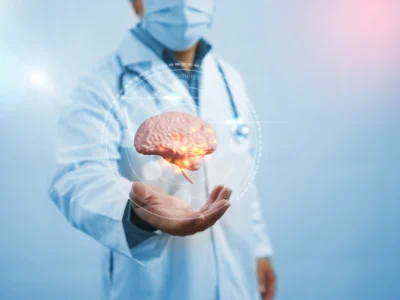
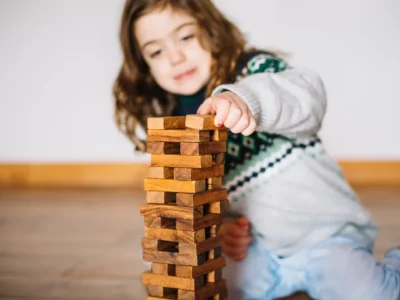
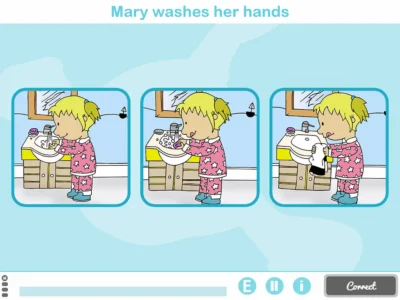

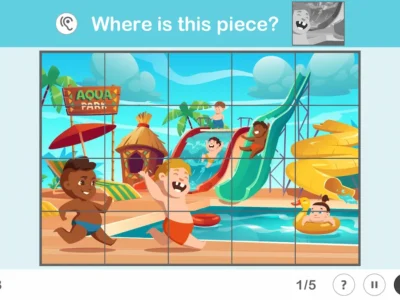
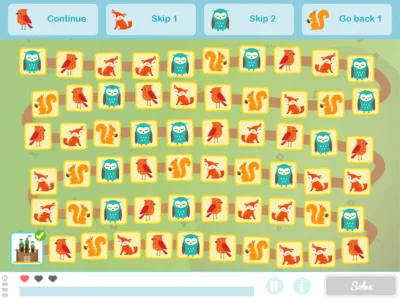
 Spatial Hemineglect: The Half of Everything
Spatial Hemineglect: The Half of Everything
Leave a Reply